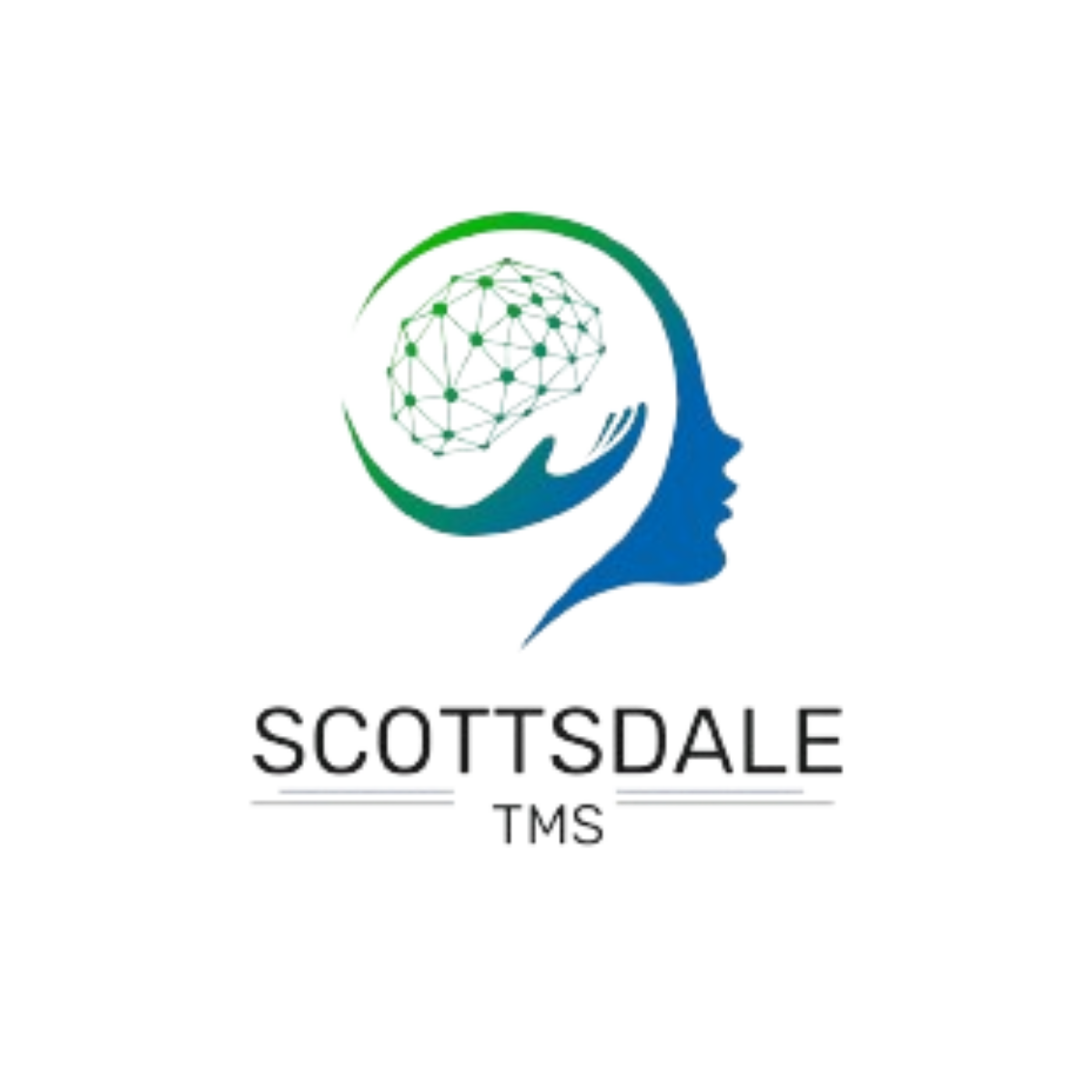Transcranial magnetic stimulation (TMS) has gained attention as a noninvasive treatment for depression and other mental health conditions. Unlike antidepressant medications or electroconvulsive therapy (ECT), TMS uses a magnetic coil to deliver targeted pulses to specific areas of the brain. This process helps stimulate nerve cells that regulate mood.
With its growing popularity, many people are asking: Can you do TMS at home? At-home TMS devices have sparked interest for their convenience, but how do they compare to professional in-clinic TMS treatment? This article explores the differences, benefits, and risks to help you understand which option may be best.
Questions Answered in This Article:
Our Alcohol Addiction Treatment Programs

Scottsdale Rehab
Luxury Personalized Rehab

Hart Rehab
Holistic Luxury Personalized Rehab

Scottsdale Detox
Luxury Medical Detox
TMS Therapy Overview
TMS therapy uses a magnetic field to influence activity in brain regions linked to mood regulation. A magnetic coil is placed near the scalp to send pulses into areas of the brain responsible for mood control, particularly the prefrontal cortex. These pulses help stimulate nerve cells that may be underactive in people with depression.
TMS treatment is FDA-approved for major depressive disorder and has shown promise in conditions like obsessive-compulsive disorder and anxiety. For people with treatment-resistant depression, where antidepressant medications or psychotherapy do not provide enough relief, TMS sessions offer another path forward.
According to the National Institute of Mental Health, about 30% of patients with depression do not respond to standard treatments. For these individuals, TMS can be a life-changing therapy.
Can You Do TMS at Home?
The idea of treating depression from home sounds appealing. But can TMS therapy really be done outside of a clinic?
Currently, in-clinic TMS treatment is the only FDA-approved option in the United States. At-home devices marketed for brain stimulation exist, but most are not the same as medical-grade TMS machines. These consumer devices often use weaker currents or forms of transcranial direct current stimulation (tDCS), which is different from TMS.
While at-home TMS devices offer convenience, safety and effectiveness remain concerns. Without professional supervision, it’s difficult to ensure proper use, correct targeting of areas of the brain, and safe stimulation levels. Misuse may lead to ineffective treatment or unwanted side effects.
What is an At-Home TMS Device?
An at-home TMS device typically looks like a headband or helmet with electrodes or a lightweight coil. These devices may use lower-intensity magnetic pulses or alternative methods such as tDCS to deliver stimulation.
Unlike professional machines, at-home devices are not designed to penetrate as deeply into brain tissue. Their ability to stimulate nerve cells is limited compared to in-clinic equipment. In fact, the Food and Drug Administration (FDA) has not approved any full-strength TMS devices for home use.
The main appeal of an at home TMS device is accessibility. Users can perform sessions at any time without traveling to a clinic. For those with mild depressive symptoms, these devices may offer some benefit, but clinical evidence is still limited.
What is In-Clinic TMS Treatment?
In-clinic TMS involves visiting a treatment center where a psychiatrist or trained technician administers sessions. A magnetic coil is carefully positioned on the patient’s scalp to target specific brain regions. Each session lasts around 20–40 minutes, depending on the protocol used.
Professional TMS devices are significantly more powerful and precise than consumer devices. In-clinic treatment protocols are based on years of clinical research and are closely monitored for safety.
One advanced approach, called theta burst stimulation, delivers rapid bursts of pulses in just a few minutes. This has made some TMS sessions shorter and more efficient while maintaining effectiveness.
According to the American Psychiatric Association, 50–60% of patients with treatment resistant depression experience significant improvement with TMS treatment, showing its effectiveness compared to alternatives.
Key Differences Between At Home TMS vs. In-Clinic TMS
When comparing TMS devices at home with professional in-clinic treatments, the differences become clear in terms of safety, effectiveness, cost, and oversight. While both approaches aim to treat depression by using a magnetic field to stimulate nerve cells, their reliability and approval status vary greatly.
Below is a side-by-side comparison of the benefits of TMS at home and in-clinic TMS, as well as their other aspects, to help you see the distinctions more clearly:
| Category | In-Clinic TMS | At-Home TMS Devices |
| Effectiveness | Backed by clinical studies, FDA-approved, and shown to reduce depressive symptoms | Limited research, weaker stimulation, and not FDA-approved for depression |
| Safety & Supervision | Supervised by professionals who adjust settings and monitor side effects | Risk of misuse, incorrect placement, or overuse without medical oversight |
| Cost | Higher cost, though insurance may cover for treatment resistant depression | Lower upfront cost, but effectiveness is uncertain |
| Accessibility | Requires frequent travel, often 5 sessions per week for several weeks | Convenient, can be used anytime without traveling |
| Regulation & Approval | FDA-approved and recognized as safe and effective | Most devices lack FDA approval and remain in a regulatory gray zone |
Who Might Benefit from Each Option?
In-clinic TMS is best suited for people with moderate to severe depression, especially those who have not improved with antidepressant medications. The professional oversight ensures safety and effectiveness.
At-home devices may appeal to individuals with mild depressive symptoms or those interested in supplemental treatments for depression. However, they should not be used as a replacement for professional care. Anyone considering at-home devices should first consult a licensed healthcare provider.
Potential Risks of TMS Therapy at Home
The biggest concern with at home TMS devices is misuse. Incorrect placement of the magnetic coil or overuse of the device could reduce effectiveness or cause side effects such as headaches, dizziness, or discomfort.
Without professional evaluation, there is also a risk of overlooking underlying mental health conditions that require other treatment options. At-home devices may give a false sense of security, delaying effective treatments for depression.
The Future of TMS at Home
While at home devices are not yet FDA-approved for depression treatment, ongoing research is exploring safe ways to bring TMS into homes. Advances in wearable technology, telemedicine, and remote monitoring may make this possible in the future.
Hybrid models could allow patients to use devices at home while being supervised remotely by healthcare providers. If the Food and Drug Administration eventually approves consumer-grade TMS devices, accessibility for patients could expand significantly.
For now, clinical TMS treatment remains the gold standard. At-home TMS is still in its early stages, with much research needed to match the proven effectiveness of in-clinic care.
Finding Help and Treatment
TMS at home and in-clinic TMS share the same goal: to treat depression by using a magnetic field to stimulate nerve cells in key areas of the brain. However, their differences are significant.
- In-clinic TMS is FDA-approved, proven effective for treatment resistant depression, and supervised by professionals.
- At home devices are more convenient but lack approval, have weaker stimulation, and carry safety risks.
While at-home options may sound appealing, in-clinic treatment remains the most reliable way to treat depression with TMS. As research continues, the future may bring safer, FDA-approved at-home devices. Until then, consulting a healthcare provider is the best step for anyone considering TMS treatment or other treatments for depression.
If you or a loved one is facing challenges with mental health, reaching out to a professional can make all the difference. With the right support, early care, and access to effective treatments, real and lasting recovery is possible. Asking for help is not a weakness—it’s a brave step toward healing.
Consider scheduling a consultation with a local TMS provider to see if this innovative therapy is right for you. Many people have found renewed hope and relief through TMS, and you can too.

